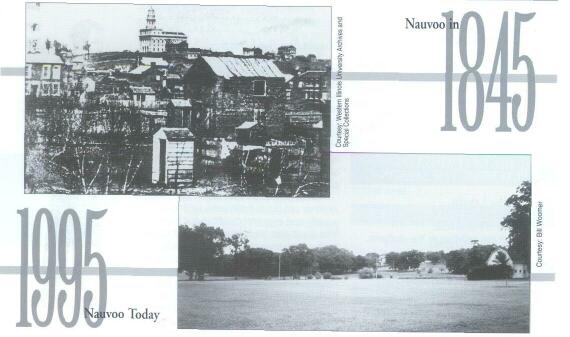 |
Home | Search | Browse | About IPO | Staff | Links |
 |
Home | Search | Browse | About IPO | Staff | Links |
Overview
Main Ideas
Connection with the Curriculum
Teaching Level Grades 6-12
Materials for Each Student
• A copy of this article's content portion
Objectives for Each Student
20 • Examine the development of individual rights under federal and state constitutions. • Determine the ways in which rights have been extended to all citizens since Illinois became a state. • Investigate the role that states have played in the protection of individual rights. • Compare and contrast the view of rights in the early American Republic with those of the twentieth century. • Analyze documents for historical content to include comparing and contrasting 1818 Illinois Constitution with the U.S. Constitution.
Opening the Lesson
• Assign the activities to the students.
Developing the Lesson
• The second activity is designed to develop student abilities to read passages in a way that includes more than the literal meaning. This sample deals with the tyranny of the majority and is an adaptation of a passage taken from de Tocqueville. Several words have been underlined because they are terms that may need to be explained to students. Students completing the exercise should be asked to justify their answers to each question by using the text of the passage. • The third activity is designed to be used as an alternative assessment prompt for students. Each of the open-ended questions is intended to assess what students might learn during a study of rights and individual freedoms using cases from the early years of Illinois statehood. Teachers should note that the timeline is a prompt and that no questions about the timeline are actually asked.
Concluding the Lesson
Another way to conclude these lessons is to ask students to list examples of these or other rights that have been extended to all citizens since Illinois became a state. Students can also be asked to evaluate whether our rights have been extended equally and evenly throughout our history. This could also be applied to current events such as the censorship of music lyrics.
Extending the Lesson
Middle level students may be interested in conducting an oral history project on the expansion of rights. Questions that might be answered could include whether rights were equally extended to all during these events. This could also be an activity that brings students in closer contact with parents, grandparents, and great-grandparents who have interesting stories to share.
Assessing the Lesson
21
Nauvoo was the largest city in Illinois in 1844. The pictures above show Nauvoo in 1845 and in 1994.
BRIEFLY - write your answers:
Why might Nauvoo have been so large in the 1840s?
What might have happened to cause the changes between the two photographs? Why do you think so?
How could that be tested?

22
During the 1830s, Alexis de Tocqueville, a French traveler, visited the United States and wrote his observations about American life and politics. These were published as Democracy in America. Read the following passage from Democracy in America and answer the questions about the passage.
When an individual. . . is wronged in the United States, to whom can he apply for redress? If to public opinion, public opinion constitutes the majority: if to the legislature, it represents the majority, and . . . obeys it; if to the executive power, it is appointed by the majority, and serves as a passive tool in its hands. The public force consists of the majority under arms; the jury is the majority invested with the right of hearing .. . . cases; and in certain states the judges are elected by the majority. Adapted from Richard D. Heffner, ed., Democracy in America (1956). What did the author say about the role?
What did the author mean?
What is the principle involved?
23
The events on this timeline illustrate the development of individual rights in Illinois and the United States.
Click Here to return to the Article 24 |
|
|